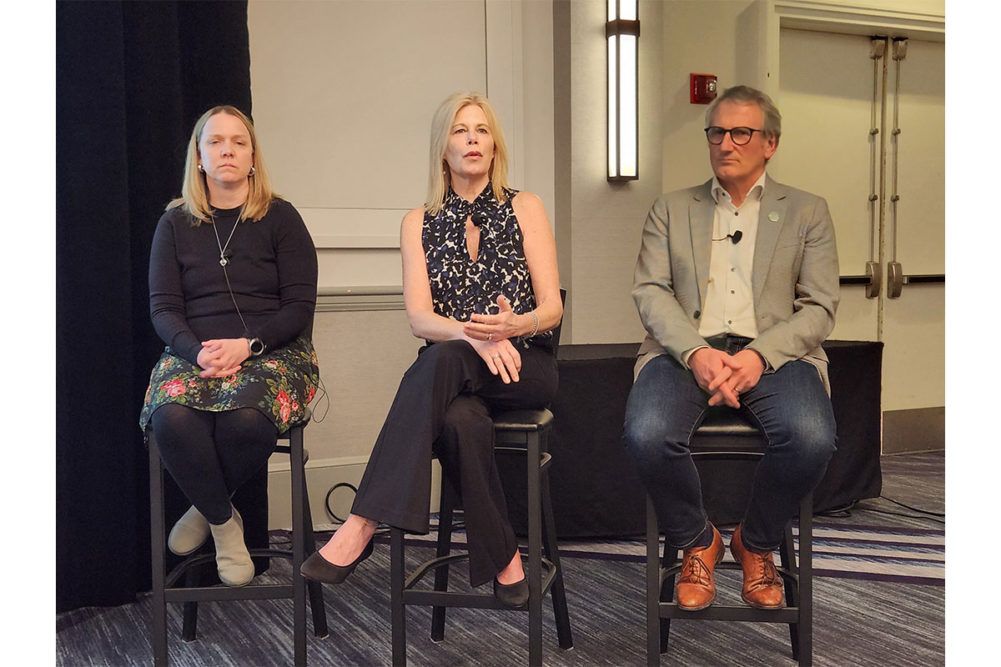CHICAGO — The journey to sustainability may take a company on several roads, some dealing with sourcing, others with food waste or energy savings. How a company approaches sustainability may depend on its size and, in the baking industry, whether the company is a bakery, an ingredient manufacturer or an equipment manufacturer.
“If you’re just starting on your journey, it can be intimidating,” said Abby Ceule, senior director, global functional systems for Corbion, in a Feb. 28 presentation during the American Society of Baking’s BakingTech 2024 in Chicago.
She gave various examples of sustainability in baking like longer shelf life, sustainably sourced ingredients, environmentally friendly packaging, fair trade, reduced carbon footprint and plant-based ingredients.
Ceule advised taking one specific road initially.
“When you’re first starting, you can’t go in and try to do 10 things at once,” she said. “Find one place to start — just one, one thing you think you can achieve. You want to build confidence within the organization.”
In baking, shelf life might be an initial undertaking.
“What would be the difference if you worked on packaging and ingredient solutions to give you one day more of shelf life or one more week?” Ceule said. “What would that allow you to do if you were in business? How much less would you waste? How many more consumers would you reach.”
Bakers may find partners along their sustainability journey, she said. They may ask their suppliers how they source their grains, perhaps leading to better sustainable sourcing of ingredients. Bakers may ask retailers their views on where bread is being wasted.
“It’s not just on you,” Ceule said.
Within the baking industry, ingredient manufacturers are leading the way in sustainability, said Marjorie Hellmer, president of Cypress Research Associates, LLC. Sixty-two percent of ingredient manufacturers said they had an environmental, social and governance (ESG) program in place, according to a 2023 survey involving Cypress Research, Baking & Snack and the American Bakers Association. Equipment manufacturers were at 47% while baking manufacturers were at 43%.
Drivers for establishing ESG programs differed by sector. Customer demands ranked first for baking manufacturers at 54%. The top answer for ingredient manufacturers was the company’s business model preference at 59%, and No. 1 for equipment manufacturers was market/consumer demands at 53%.
The baking industry could improve in board diversity, Hellmer said. While 60% of ingredient manufacturers said they had a board diversity program in place or had one under development, the percentages were 55% for baking manufacturers and 42% for equipment manufacturers.
Smaller companies like We Seal Ltd., Leeds, England, could take five “fingerprint” (instead of footprint) sustainability actions, said Richard Hobson, chief executive officer of We Seal Ltd., a company providing re-sealable, recyclable bag closures, including those for bread bags.
The first fingerprint involves defining what a company does, such as We Seal Ltd. producing 4 billion bag closures a year. Companies for the second fingerprint should figure out how their actions impact the planet.
“Our elephant in the room is the fact that it’s plastic,” Hobson said.
Third, companies should consult and examine literature, including findings from the Ellen MacArthur Foundation, which focuses on a circular economy where materials are never wasted and nature is regenerated. Companies may find out how to make the product lighter and if it can be recycled, Hobson said.
Fourth, set priorities and act. Hobson brought up carbon offsetting and paper packaging within the fourth fingerprint.
“Carbon offsetting feels a little bit like a get-out-of-jail card,” he said.
We Seal Ltd., wanting to offset its plastic use, has a program to plant trees. About 80% of the land in the United Kingdom was woodland a few hundred years ago, Hobson said. Now it is under 10%. The positive environmental effect of planting trees, however, takes a couple decades as the trees do not absorb carbon until they reach maturity.
Paper packaging has a drawback in that it absorbs moisture and may fail to keep bread fresh, Hobson said. Some paper packaging has non-plastic barriers, but they are heavier than current bags, he said. Paper packaging may be an example of “greenwashing,” Hobson said.
“It’s not being honest in my opinion,” he said.
Sharing and learning make up the fifth fingerprint.
“I’m trying to do our bit,” Hobson said. “I’m trying to learn as we go along, and I’m trying to talk about it.”




